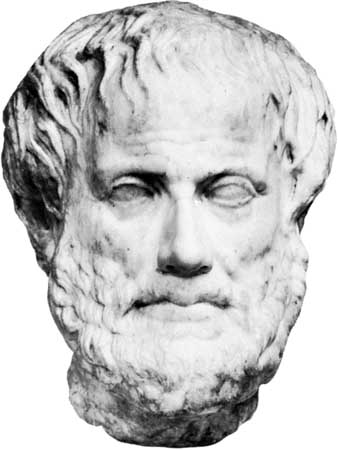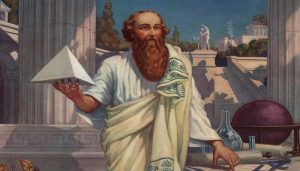
There was no other ancient thinker who held a greater influence over European medieval intellectual life more than Aristotle (384 – 322 BCE). It’s easy to see why, giving his prolific writings and interests in a wide range of topics that included physics, cosmology, biology, zoology, geology, psychology, mathematics, logic, metaphysics, politics, ethics, justice, and rhetoric – to name a few. Over 150 books are attested to be authored by Aristotle, although only 30 or so of his works survive to the modern day.
Aristotle was born in Stageria, Macedon, was orphaned at an early age and raised by his uncle. At age 17 he went to Athens and joined Plato’s Academy where he spent 20 years studying and earning his reputation as one of Greek’s great philosophers. After his time at The Academy he ended up in King Philip of Macedon’s court, where he tutored his 13 year old son, Alexander, who grew up to be Alexander The Great. During his time at the Macedonian court Aristotle also tutored two future kings and successors to Alexander’s empire, Ptolemy and Cassander.
When Aristotle did not receive headship of the Academy in Athens due to political reasons, he started his own establishment around 335 BCE with encouragement from Alexander called The Lyceum. It is during his time at The Lyceum, from around 335 BCE to 323 BCE, when he composed most of his works. Aristotle was forced to leave The Lyceum and Athens again due to political reasons after Alexanders death. He died shortly after by natural causes.
Aristotle’s impact and legacy in western philosophy is immense. He was one of the first great figures in the history of science, influencing scientific thought for well over a millennia. Some of Aristotle’s works were preserved through the fall of Rome. They were well read in Byzantium and in the Islamic empire but were virtually forgotten in Western Europe. Then, in the 13th century, much of his work was reintroduced into Western Europe through the work of Thomas Aquinas and others, and a synthesis of Aristotelian philosophy and Christian theology held supreme for over three centuries. This Aristotelian influence was not to last forever as the dawn of the scientific revolution burst onto the world scene in the 16th century and permanently changed how humans viewed themselves and their world.
